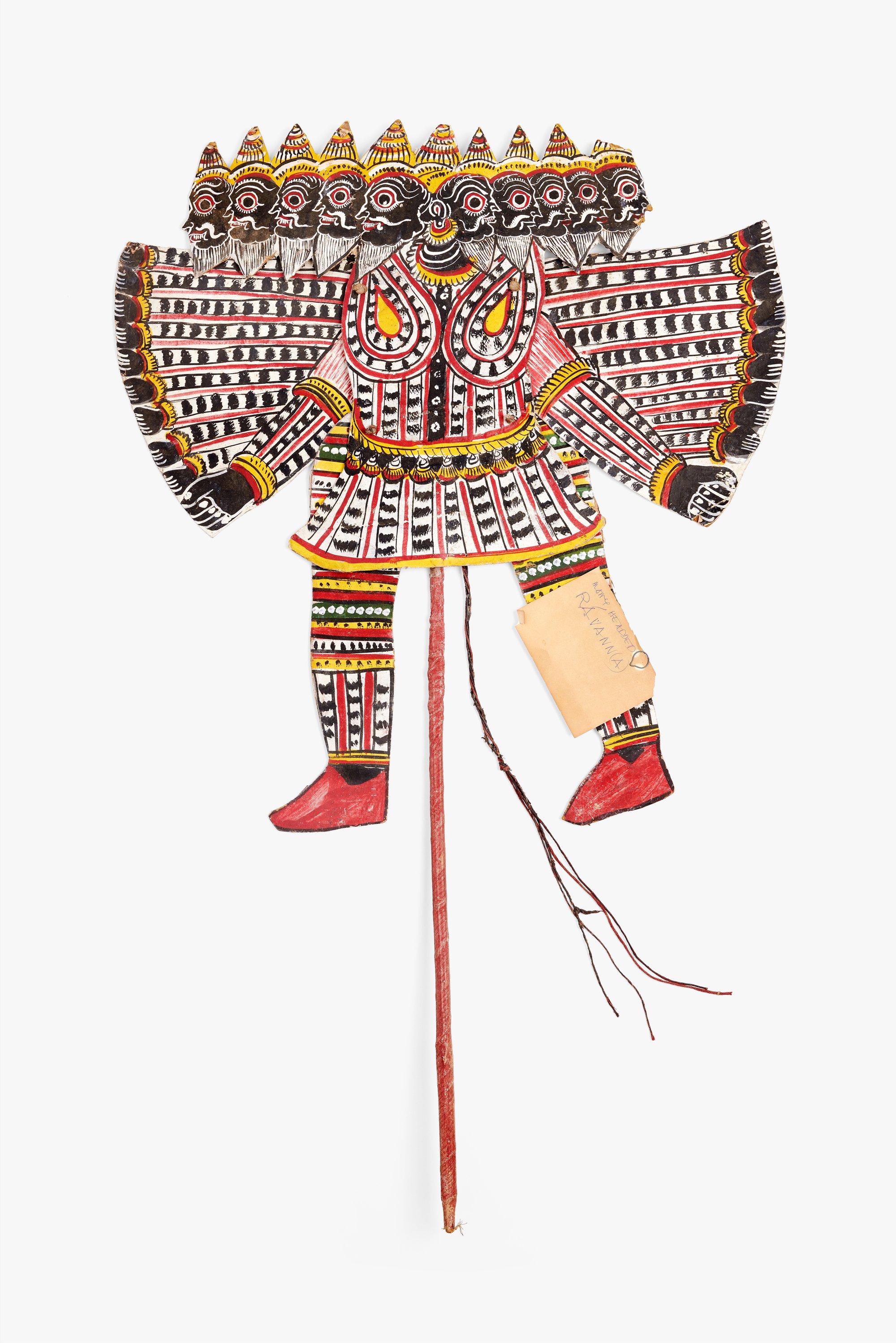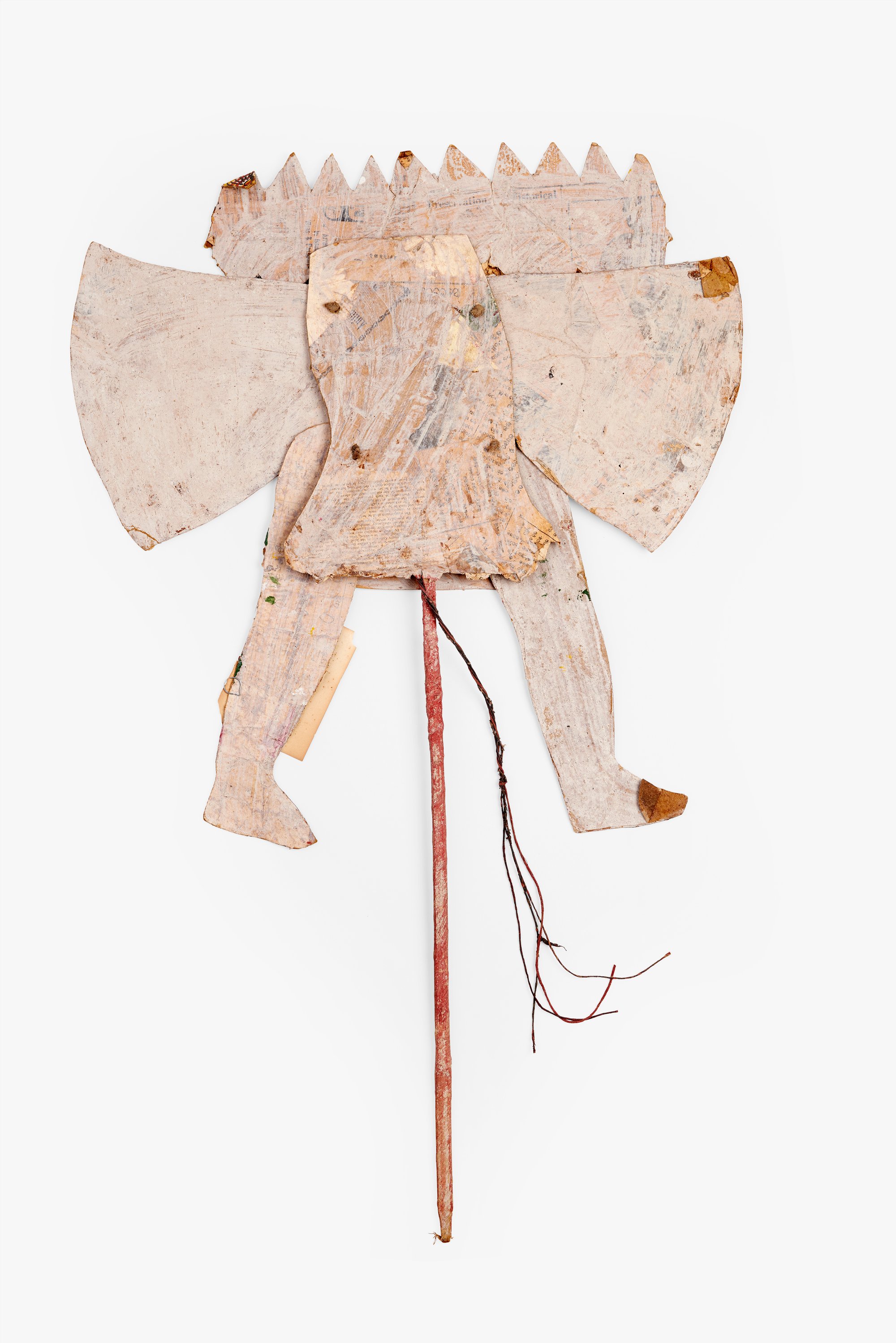Ravana Shadow Puppet
n.d.
While shadow puppets like this are found in many cultures across Asia, Europe, and the Arabian Peninsula and form a part of a long-standing performing arts tradition, to Ray and Charles they offered another example of a universal typology associated with play. This particular puppet is from Andhra Padesh, a coastal state in southern India where shadow puppetry known as tholu bommalata dates to the 3rd century BCE. Tholu bommalata puppets are traditionally made from natural leather that is colored with vegetable dyes and other pigments. The two-dimensional puppets are used, along with fabric screens and bright lights, to create shadows that bring Indian folktales and Hindu epics to life. In this case, the puppet represents the character Ravana, a demon king with ten heads and twenty arms who is the primary antagonist in the Hindu epic, the Ramayana. Ravana’s many heads represent his expansive knowledge and powerful intellect, which he puts to nefarious use when he kidnaps Sita, the wife of the story’s hero Rama.
- Medium:Wood, paper, paint
- Dimensions:27 1/4 x 19 3/4 x 7/16 in. (69.2 x 50.2 x 1.1 cm)
- Origin:India
- Item:T.2019.2.69

